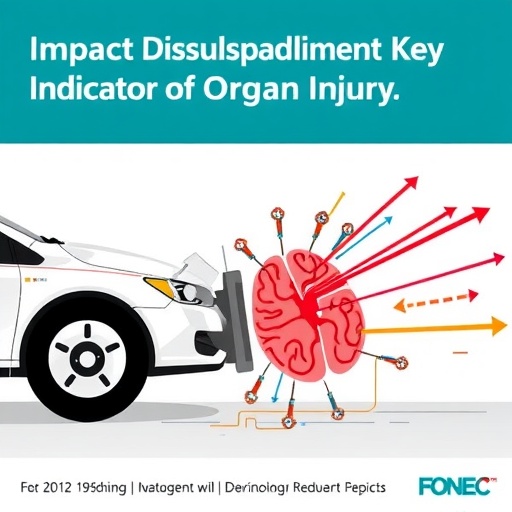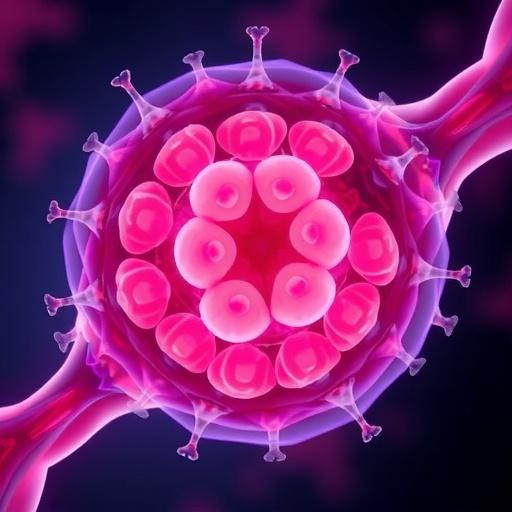
In a groundbreaking study conducted in Thailand, researchers explored the economic viability of using the Indocyanine Green (ICG) test as a preoperative assessment tool for liver function in patients facing major hepatectomy. This innovative evaluation comes at a critical time when the need for effective preoperative assessments has become increasingly essential in the realm of surgical procedures. With hepatectomies being complex operations with significant implications for patient outcomes, the quest for reliable and cost-effective preoperative evaluations is more pertinent than ever.
The study highlights the significance of assessing liver function before performing major surgeries, particularly for patients with underlying liver conditions. The ICG test is a dynamic, real-time measure that examines liver function by tracking the clearance of this fluorescent dye from the bloodstream, allowing for a nuanced understanding of hepatic performance. This is especially crucial in countries like Thailand, where liver diseases such as cirrhosis and hepatitis are prevalent. The study by Permsuwan et al. aims to bridge a significant gap in the existing literature regarding the economic impact of this test, presenting data that could potentially reshape surgical protocols and enhance patient care.
Through meticulous research design and analysis, the authors conducted an economic evaluation and budget impact analysis tailored for the Thai healthcare environment. They gathered data on ICG test costs, as well as the potential healthcare savings that could result from using the test in surgical planning. The findings have far-reaching implications for healthcare policy and resource allocation, particularly in regions where healthcare budgets are under continuous scrutiny. The study’s comprehensive approach suggests that implementing the ICG test could reduce complications and re-admissions, yielding a favorable cost-benefit ratio.
Incorporating this test into clinical practice may streamline the preoperative process, equipping surgeons with the critical information they need to make informed decisions. It allows for better stratification of surgical risks, ultimately enhancing the patient’s overall surgical experience and postoperative recovery. By showcasing a potential reduction in adverse outcomes related to poor liver function assessments, the study advocates for a shift toward more efficient and informed surgical practices.
What distinguishes this study is the meticulous economic framework within which the ICG test’s viability was analyzed. The authors not only focused on direct costs associated with the test itself but also examined indirect costs that could arise from complications due to undetected liver dysfunction. By quantifying these elements, the research articulates a robust argument for incorporating the ICG test into routine clinical assessments. This detailed economic perspective is essential for healthcare providers who must navigate the complexities of budgeting in a resource-limited setting.
The study also acknowledges the challenges that lie ahead in terms of widespread adoption of the ICG test. While the findings underscore the potential economic benefits, it is essential to consider issues such as training healthcare personnel and integrating the test seamlessly into existing hospital workflows. Furthermore, the authors discuss potential barriers to implementation, including the need for robust infrastructure and ongoing education about new testing protocols among surgical teams. Overcoming these hurdles will be crucial to ensure the transition to more advanced preoperative evaluations.
Additionally, the authors present various scenarios to address how implementation might differ across healthcare facilities of varying sizes and capabilities. This nuanced approach recognizes that a one-size-fits-all solution may not be feasible and advocates for tailored strategies that take into account distinct local challenges. As healthcare delivery continues to evolve in a post-pandemic world, embracing flexibility and adaptability within surgical protocols may become more critical than ever.
This pioneering study not only contributes significantly to the existing body of literature but also paves the way for future research. It beckons further exploration into other innovative diagnostic tools that could enhance surgical planning and patient outcomes. The potential of ICG as a preoperative test represents a step towards more refined, evidence-based healthcare practices that prioritize patient safety and economic efficiency. The integration of sophisticated diagnostics into preoperative evaluations could become the norm rather than the exception, ultimately redefining surgical care in low and middle-income countries.
Researchers also expressed optimism regarding potential collaborations with international stakeholders to facilitate the adoption of ICG testing not just in Thailand but across the wider Southeast Asian region. By fostering partnerships with academic institutions and healthcare organizations, there is significant potential to broaden the impact of this study. The vision extends beyond national borders, aspiring to create a network of knowledge-sharing that benefits emerging economies grappling with similar healthcare challenges.
As advancements in healthcare technology continue to emerge, the role of economic evaluations in shaping clinical guidelines will invariably grow. By emphasizing the importance of cost-effectiveness in decision-making, studies like the one conducted by Permsuwan et al. will equip healthcare administrators with the data they need to make informed choices. Stakeholders must recognize the value of incorporating rigorous economic evaluations into their strategies for deploying new medical technologies.
This research ultimately serves as a compelling case for the integration of the Indocyanine Green test in surgical planning. It advocates for a paradigmatic shift in how healthcare systems assess and implement preoperative evaluations, aligning clinical best practices with economic realities. In an era where healthcare costs are under increasing scrutiny, a clear, evidence-backed approach to testing and diagnostics can help pave the way for innovative solutions that ultimately benefit patients and healthcare providers alike.
The future of surgical patient care may be transformed through the insights gained from this research. As new paradigms emerge for assessing liver function and preoperative risks, the hope is that more patients will be able to benefit from enhanced surgical outcomes and reduced complications. As the study resonates in the fields of surgery and Hepatology, it highlights the need for continued collaboration, innovation, and a patient-centered focus in the evolution of healthcare.
Strong evidence pointing toward the economic advantages of the ICG test may also open doors for additional funding and resources aimed at improving surgical care, ensuring that patients receive the best possible assessment prior to undergoing major surgical procedures. In navigating the complex landscapes of surgery and patient management, embracing innovative solutions that are substantiated by rigorous economic evaluations will be essential for the future of healthcare.
In conclusion, the findings from this research embody a vision of modern surgical practice characterized by precision, economic efficiency, and enhanced patient safety. With policymakers, healthcare providers, and funding organizations united in the pursuit of improved preoperative assessments, there is great potential for reshaping the landscape of surgical care in Thailand and beyond. The adoption of the ICG test may represent a significant leap toward achieving these goals, ultimately ensuring that every surgical patient receives the highest standard of care possible.
Subject of Research: Economic Evaluation and Budget Impact of Indocyanine Green Test for Preoperative Liver Function in Patients with Major Hepatectomy in Thailand
Article Title: Economic Evaluation and Budget Impact Analysis of Indocyanine Green Test for Preoperative Liver Function in Patients with Major Hepatectomy in Thailand
Article References:
Permsuwan, U., Sriuttha, P., Tovikkai, C. et al. Economic Evaluation and Budget Impact Analysis of Indocyanine Green Test for Preoperative Liver Function in Patients with Major Hepatectomy in Thailand. Adv Ther (2025). https://doi.org/10.1007/s12325-025-03341-1
Image Credits: AI Generated
DOI: 10.1007/s12325-025-03341-1
Keywords: Indocyanine Green Test, Major Hepatectomy, Liver Function, Economic Evaluation, Thailand, Preoperative Assessment, Surgical Care, Healthcare Policy, Cost-Effectiveness, Patient Outcomes.
Tags: cost-effective surgical evaluationseconomic impact of liver function testseconomic viability of Indocyanine Greenenhancing patient care in hepatectomyimplications of liver diseases in surgeryIndocyanine Green test benefitsliver function assessment methodsmajor hepatectomy patient outcomespreoperative assessment tools in liver surgeryreal-time liver function testingsurgical protocols for liver surgeryThailand liver disease prevalence




